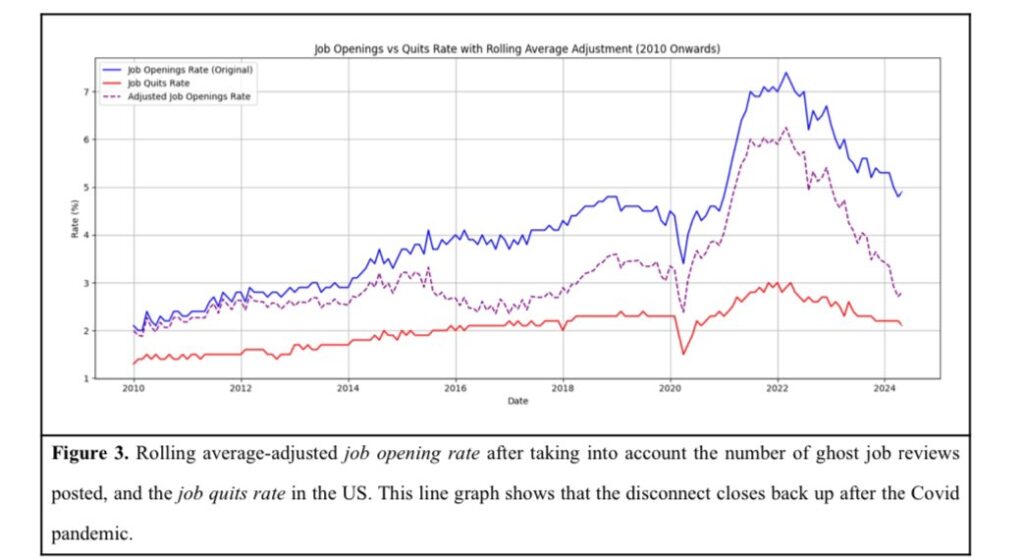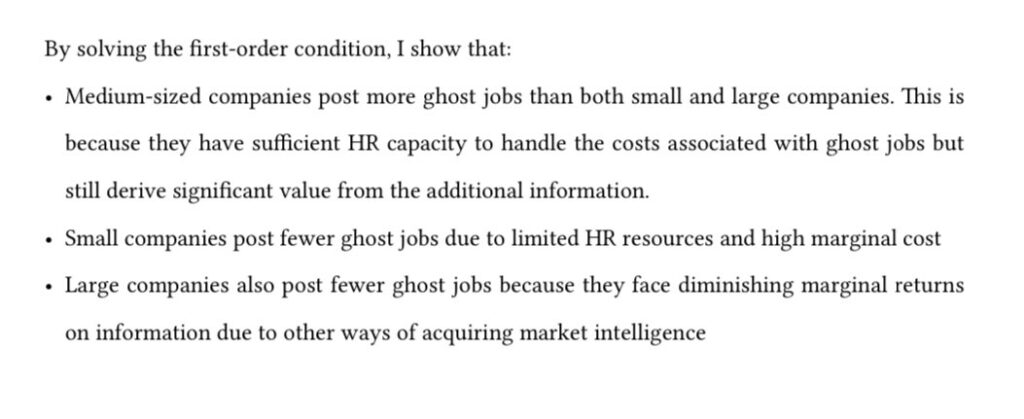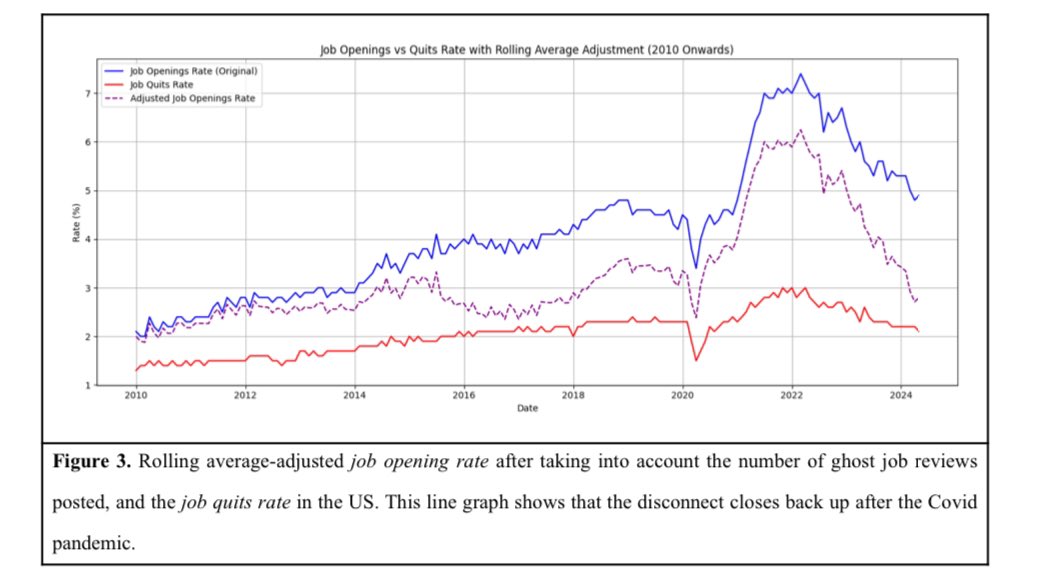Why You’re Struggling to Land a Job: The Ghost Job Epidemic
Discover the truth about ghost jobs—fake job listings with no intention of hiring. Learn how they waste time, distort labor data, and impact job seekers, based on Hunter Ng’s research.
Key Takeaways:
- Ghost jobs are fake job postings that companies never intend to fill, affecting up to 21% of job listings.
- These postings lead to wasted time, increased job-search fatigue, and distorted labor market signals.
- Companies post these listings to build talent pipelines, collect market data, or maintain an active appearance.
- Specialized roles and mid- to large-sized companies are the worst offenders.
What Are Ghost Jobs?
Ever applied for a job, nailed the interview, and then… crickets? Welcome to the world of ghost jobs. These aren’t just a job-seeker’s nightmare—they’re a systemic issue. Research from Hunter Ng at Baruch College reveals that one in five job ads could be ghost jobs.
Ghost jobs are job postings with no intention of immediate hiring, designed to fill other corporate needs like collecting market insights or maintaining a talent pipeline. Whether it’s keeping HR busy or gauging salary trends, these postings are often not tied to actual vacancies.
Why Companies Post Ghost Jobs
Let’s talk about what’s really going on behind the scenes. Businesses don’t post ghost jobs because they’re lazy or malicious—it’s often strategic. Here’s why:
1. HR Department Justification
HR teams need to show they’re busy to avoid budget cuts or downsizing. Posting fake roles gives the illusion of activity and ensures HR’s role looks essential, even when the company is fully staffed.
2. Talent Pipelines for Critical Roles
High-skill jobs—think software engineering, specialized healthcare, or senior leadership—take time to fill. Companies keep roles posted indefinitely to stockpile resumes for future needs. It’s like fishing in an empty pond until the right fish appears.
3. Market Research on Talent and Salaries
Ghost postings are a cheap way for companies to gather insights. By analyzing resumes and salary expectations, they can benchmark their current workforce and outbid competitors when the time comes.
Take WinTech, a defense contractor mentioned in Ng’s study, for example. The company keeps listings open year-round for hard-to-fill positions, even when they aren’t actively hiring.
How Ghost Jobs Are Distorting the Labor Market
This isn’t just bad for you; it’s bad for everyone. Ghost jobs create fake data that misleads policymakers, economists, and even businesses themselves.
The Beveridge Curve Disconnect
The Beveridge Curve, a model showing the relationship between job vacancies and unemployment, has become increasingly unreliable over the past 15 years. Why? Because ghost jobs inflate the number of “vacancies,” skewing metrics.
Ng’s research shows that labor market tools like the Job Openings and Labor Turnover Survey (JOLTS) fail to account for these phantom postings. This makes it harder to understand real hiring trends or develop effective labor policies.
Graph Adjusting for Ghost Jobs:
When we account for ghost jobs, the disconnect in the Beveridge Curve diminishes significantly. Here’s the adjusted data, showing how removing phantom postings aligns job opening rates with actual quits:

Who’s Posting Ghost Jobs?
Ng’s data, derived from Glassdoor reviews and advanced machine learning models like LLM-BERT, highlights some key offenders:
1. Mid- to Large-Sized Companies
Bigger firms have more resources and incentives to post ghost jobs. According to the study:
- Companies with 1,001 to 5,000 employees are the worst offenders, with ghost jobs making up 24.8% of postings.
- Even Fortune 500 companies engage in this practice to maintain talent pipelines and improve shareholder optics.

2. Specialized Industries
If you’re in tech, publishing, or software development, you’re more likely to encounter ghost jobs. These fields require niche skills, so companies keep ads open to scout talent—even when there’s no immediate need.
3. High-Skill Roles
Jobs requiring advanced degrees or certifications (think AI engineers, surgeons, or project managers) are more likely to be ghost jobs. The smaller pool of qualified applicants makes these postings a “just-in-case” strategy.
How to Spot Ghost Jobs
Want to stop wasting your time? Here’s how to identify a ghost job:
1. Look for Vague Job Descriptions
If the posting is overly generic or lacks concrete responsibilities, it could be a placeholder.
2. Check for Longstanding Ads
A role that’s been advertised for months or repeatedly reposted might not actually exist.
3. Beware of Slow Hiring Processes
If an interview drags on without clear next steps or feedback, the role might not be real.
4. Lack of Salary Transparency
Ghost postings often omit salary details, as they aren’t tied to real budgets or offers.
5. Ask Direct Questions
During interviews, ask when they plan to fill the position and how long it’s been open. Vague answers are a red flag.
Want to dive deeper into how to identify fake job listings? Check out this guide on How to Spot and Avoid Ghost Jobs for actionable tips and strategies.
Real-Life Examples of Ghost Jobs
Here are some insights from Ng’s dataset of 269,347 Glassdoor reviews:
- “Position Was Put on Hold”: One candidate applied for a marketing role, went through five rounds of interviews, only to be told the job was “on hold indefinitely.”
- “No Intention to Hire”: Another applicant for a product designer role was ghosted after completing every step of the hiring process. Turns out, the company canceled the position.
- “Resume Collection Tactics”: Some job seekers were interviewed for roles that had already been filled or canceled, clearly signaling a ghost posting.
FAQs: Ghost Jobs
Q: What are ghost jobs?
A: Ghost jobs are fake job postings with no immediate hiring intent, often used to collect resumes or gather market insights.
Q: How common are ghost jobs?
A: According to Ng’s study, 21% of job ads could be classified as ghost jobs.
Q: Why do companies post ghost jobs?
A: To maintain talent pipelines, conduct market research, or keep HR departments busy.
Q: Can I tell if a job is fake?
A: Look for generic descriptions, lack of salary transparency, or long-standing ads. For more strategies, read this detailed guide on How to Spot and Avoid Ghost Jobs.
Q: Do ghost jobs hurt the economy?
A: Yes. They distort labor market data, waste job seekers’ time, and create unnecessary competition.
Q: What industries are the worst offenders?
A: Tech, publishing, and software development lead the pack, especially for high-skill roles.
Conclusion: Stop Wasting Time on Ghost Jobs
Here’s the truth: The job market isn’t as it seems. Ghost jobs waste time, create unnecessary stress, and mislead job seekers. But now you’re armed with the knowledge to outsmart them.
What can you do? Focus on opportunities with clear timelines, detailed descriptions, and responsive communication. And if something feels off, trust your gut—it might just save you hours of frustration.
Ready to sharpen your job search skills? Learn more about how to avoid fake postings with this comprehensive guide on How to Spot and Avoid Ghost Jobs.
For a deeper dive into the research and methodology behind this phenomenon, check out Hunter Ng’s study, “Why is it so hard to find a job now? Enter Ghost Jobs.”
Take control of your job search. Don’t let ghost jobs haunt your career journey.
Talk Resumes with Wealth Waggle
Perfect your resume with AI-assisted feedback and tips (using the latest recruiting intelligence).









